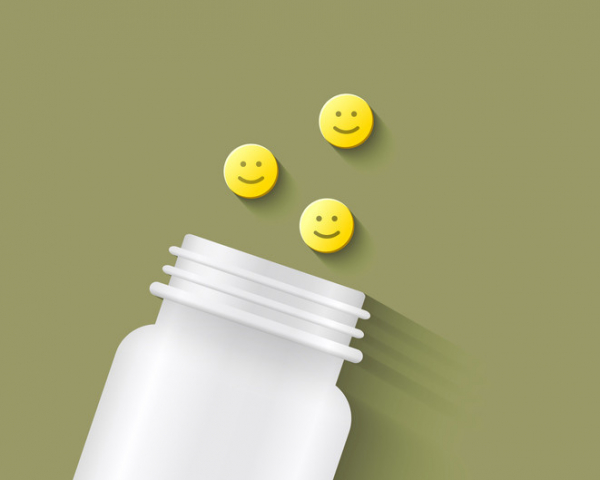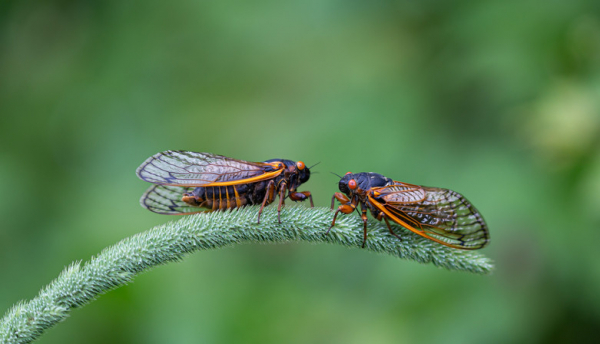
Is there a good side to drug side effects?

Drug side effects are common, and often quite troublesome.
Major side effects, such as severe or even life-threatening allergic reactions, require immediate treatment and discontinuation of the drug. More minor symptoms may be tolerable when weighed against drug benefits. And sometimes, these go away on their own as the body gets used to the drug.
But there’s another type of side effect you hear much less about: ones that are beneficial. Though uncommon, they’re worth keeping in mind when you’re starting a new medicine.
Aren’t all side effects bad?
The term side effect is usually assumed to be a bad thing. And that’s typically true. But that leaves out the “good” side effects. Relatively little is published on this, so it’s not clear how common they are. But four notable examples include:
- Minoxidil (Rogaine, Gainextra, other brands). Developed in the 1970s for high blood pressure, this drug also increased hair growth in study subjects. What was initially considered a bothersome side effect eventually became its primary use: topical forms of this drug are commonly used to treat hair loss.
- Diphenhydramine (Benadryl or generic versions). This common treatment for allergic conditions has the side effect of drowsiness. For adults with allergy issues and trouble sleeping, the sedative effect can be helpful. Regular, long-term use of diphenhydramine is not recommended, as it may increase the risk of dementia.
- Sildenafil (Viagra or generic versions). Originally developed as a treatment for high blood pressure and angina, it didn’t take long for male users to realize the drug could trigger erections within 30 to 60 minutes. The makers of sildenafil recognized that under the right circumstances, this could be a highly beneficial side effect. In 1998 it was approved as a treatment for erectile dysfunction.
- Semaglutide (Ozempic, Wegovy, Rybelsus). This drug was developed to treat diabetes, but early users noticed reduced appetite and significant weight loss. Now, several formulations of these related drugs are approved for diabetes and/or weight loss.
In the best study I’ve read on the topic, researchers found more than 450 reports of serendipitous beneficial effects of various drugs since 1991. And that may be an underestimation, since report forms did not specifically ask for or label this type of side effect, according to the study authors.
Silver linings: Repurposing and repackaging drugs
While the discovery of helpful drugs can arise unexpectedly, drug developers are increasingly using a more intentional approach: using side effect profiles to look for new uses.
For example:
- A drug reported to cause reduced sweating as a side effect may be effective for hyperhidrosis, a condition marked by excessive sweating.
- Drugs reported to cause low blood pressure as a side effect might be effective treatments for high blood pressure (hypertension).
- New treatments for breast cancer may include older medicines that have a similar side effect profile as known anti-cancer drugs.
The availability of large side effect registries has made this method of identifying drugs for repurposing a more realistic option. So, even negative side effects can have a silver lining.
Bad side effects and the nocebo effect
While side effects can be positive, most are not. Medication side effects are a common reason people give for not taking prescribed drugs regularly. And adverse reactions to medicines prompt up to 8% of hospital admissions, according to one analysis.
To make matters worse, in some cases the expectation of side effects seems to make them more likely to occur. Called the nocebo effect, it increases the chances of experiencing a negative side effect and seems due, at least in part, to expectations. Contrast this with the placebo effect, where a sugar pill or another inactive treatment can lead to benefit.
The bottom line
Many people avoid taking medications because they fear possible side effects. That’s understandable. But not taking a medication can mean missing out on its benefits. And anticipation or expectation of side effects can increase the chances you’ll have them.
So, while it’s important to be aware of the most common side effects caused by the medicines you take, it’s also important not to overestimate your chances of experiencing them. And remember: there’s always a chance you’ll have a side effect you actually welcome.
About the Author

Robert H. Shmerling, MD, Senior Faculty Editor, Harvard Health Publishing; Editorial Advisory Board Member, Harvard Health Publishing
Dr. Robert H. Shmerling is the former clinical chief of the division of rheumatology at Beth Israel Deaconess Medical Center (BIDMC), and is a current member of the corresponding faculty in medicine at Harvard Medical School. … See Full Bio View all posts by Robert H. Shmerling, MD

The cicadas are here: How’s your appetite?

You’ve probably heard the news: Cicadas are coming. Or — wait — they’re already here.
And are they ever! Due to an unusual overlap of the lifecycles of two types (or broods) of cicadas, trillions of cicadas are expected to emerge in the US by the end of June, especially in the Midwest.
If you’d like to see where they’ve already arrived, track them here. And if you’re wondering if this cicada-palooza could help with grocery bills, read on to decide for yourself how appealing and how safe snacking on cicadas is for you. The pros and cons could change your outlook on the impending swarm.
What to know about cicadas
Don’t worry, cicadas are largely harmless to humans. In fact, their appearance is welcome in places where people routinely snack on them as a low-cost source of calories and protein.
Estimates suggest up to two billion people regularly eat insects, especially in South and Central America, Asia, Africa, Australia, and New Zealand. Cicadas, when available, are among the most popular. And if you thought no one in the US eats cicadas, check out this video from a May 2024 baseball game.
Are you tempted to eat cicadas?
For plenty of people, cicadas aren’t the food of choice. Some people can’t get past the idea of eating insects as food. That’s understandable: after all, the culture in which we are raised has a powerful influence on what we consider acceptable in our diets. Something some Americans might find off-putting (such as eating snakes) is common in China and Southeast Asia. Meanwhile, people outside the US find aspects of the typical Western diet unappealing (such as root beer, peanut butter and jelly, and processed cheese).
But some people shouldn’t eat cicadas because it could be dangerous for them.
Why you should — or shouldn’t — eat cicadas
Eating cicadas is common in many parts of the world because they are
- nutritious: cicadas are low in fat and high in protein, including multiple essential amino acids
- inexpensive or free
- tasty (or so I’m told): descriptions of their flavor vary from nutty to citrusy to smoky and slightly crunchy.
In years when cicadas emerge, recipes for dishes containing cicadas emerge as well.
Then again, there are several good reasons to avoid making cicadas a part of your diet, including these:
- You just can’t get past the “ick” factor. Adventurous eaters may be willing to try or even embrace consuming cicadas, while others will be unable to view the idea as anything other than horrifying.
- You find the taste or consistency unappealing.
- You’re “cicada intolerant.” Some people get stomach upset, nausea, or diarrhea if they eat too many cicadas.
- You’re pregnant or breastfeeding, or are a young child. Concerns about even low levels of pesticides or other toxins in cicadas have led to recommendations that these groups not eat them. Doesn’t this suggest the rest of us should also steer clear? Well, thus far, at least, there’s no evidence that toxins in cicadas are causing health problems.
But there is one more very important entry on this list: people with a shellfish allergy should not eat cicadas. Odd, right?
The shellfish-cicada connection
Cicadas are biologically related to lobsters, shrimp, crabs, and other shellfish. So if you’re allergic to shellfish, you might also be allergic to cicadas. A particular protein called tropomyosin is responsible for the allergy. It’s found in shellfish as well as in many insects, including cicadas.
The allergic reaction occurs after eating the cicada. Just being around them or handling them won’t trigger a reaction.
Among people with a shellfish allergy, developing a reaction after eating cicadas could be a bigger problem than it seems: up to 10% of people have shellfish allergies and, as noted, insect consumption is common worldwide.
Is it okay for your dog or cat to eat cicadas?
Walking your dog after the emergence of cicadas can be a new and exciting experience for you and your pet! Dogs may chase after cicadas and eat them. Cats might, too, if given the chance. That can be a problem if your pet eats too many, as some will experience stomach upset or other digestive problems.
While the insects are considered harmless to dogs, the American Kennel Club says it’s best to steer them away from cicadas once they’ve eaten a few.
Which other insects trigger allergies?
While insect-related allergic reactions (think bee stings) and infections (like Lyme disease) are well known, the insect-food-allergy connection is a more recent discovery.
One recently recognized condition is the alpha-gal syndrome, in which a person bitten by certain ticks develops an allergy to meat. The name comes from a sugar called galactose-α-1,3-galactose (or alpha-gal) found in many types of meat including beef, lamb, pork, and rabbit. According to the CDC, up to 450,000 people in the US may have developed this condition since 2010.
There aren’t many rigorous studies of the overlap of insects and food allergies, so there are probably others awaiting discovery.
The bottom line
When it comes to eating cicadas, I’ll pass. It’s not because of the risks. I’ve never had a problem with shellfish, and for most people the health risks of eating cicadas seem quite small. It’s just unappealing to me, and I’m not a particularly adventurous eater.
But let’s go easy on those who do enjoy snacking on cicadas. Insects offer a good source of calories and protein. Just because eating them seems unusual in the US doesn’t make it wrong.
So, if you like to eat cicadas and have no shellfish allergy or other reason to avoid them, go for it! This may be a very good summer for you.
About the Author

Robert H. Shmerling, MD, Senior Faculty Editor, Harvard Health Publishing; Editorial Advisory Board Member, Harvard Health Publishing
Dr. Robert H. Shmerling is the former clinical chief of the division of rheumatology at Beth Israel Deaconess Medical Center (BIDMC), and is a current member of the corresponding faculty in medicine at Harvard Medical School. … See Full Bio View all posts by Robert H. Shmerling, MD